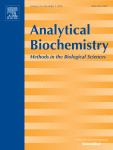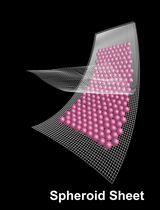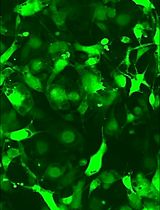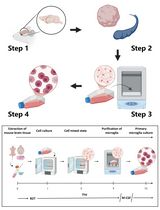- EN - English
- CN - 中文
Isolation and Expansion of Mesenchymal Stem Cells from Murine Adipose Tissue
从鼠脂肪组织中分离和扩增间充质干细胞
发布: 2017年08月20日第7卷第16期 DOI: 10.21769/BioProtoc.2516 浏览次数: 14039
评审: Yanjie LiAnonymous reviewer(s)
Abstract
Mesenchymal stem cells (MSCs) are currently intensively studied due to significant promise which they represent for successful implementations of future cell therapy clinical protocols. This in turn emphasizes importance of careful preclinical studies of MSC effects in various murine disease models. The appropriate cell preparations with reproducible biological properties are important to minimize variability of results of experimental cell therapies. We describe here a simple protocol for isolation of murine MSCs from adipose tissues and their reproducible multi-log expansion under hypoxia conditions.
Keywords: Mesenchymal stem cells (间充质干细胞)Background
MSCs were identified initially by Friedenstein as cells in bone marrow with fibroblast-like morphology, adherence to the plastic and high self-renewal capacity resulting in formation of fibroblast-like colonies in vitro (Friedenstein et al., 1976; reviewed in Phinney and Sensebé, 2013). The MSCs, due to their potential applications in medicine, are currently one of the most intensively studied adult progenitor cell types. These cells can be isolated from various organs (Murray et al., 2014), and are thought to originate from the blood vessels, either as pericytes or as vessel wall cells. In addition to their capacity to differentiate along osteogenic, adipogenic and chondrogenic lineages, MSCs possess immunomodulating properties and are thought to participate in responses to tissue damage as well as to orchestrate anti-inflammatory reactions through their ability to influence macrophage polarization (Prockop, 2013; Caplan, 2016).
Given these properties, MSCs represent significant promise for successful implementations of future relevant cell therapy clinical protocols. This in turn emphasizes importance of careful preclinical studies with MSCs in various murine disease models. The ability to prepare large numbers of appropriate cell samples with reproducible biological properties is of vital importance for minimization of variability of results during development of MSC-based experimental cell therapies. However, unlike human MSCs that possess strong anti-oxidative defenses and thus grow fairly well under atmospheric oxygen conditions, mouse MSCs are much more sensitive to oxygen stress and have a limited lifespan and expansion capacity when cultured in conventional CO2 incubators. Culturing these cells under hypoxic conditions, on the contrary, significantly extends their lifespan and allows for multi-log expansion, providing sufficient amounts of cell material with reproducible properties for repeated experiments with murine experimental disease models (Boregowda et al., 2012; Krishnappa et al., 2013). In the present paper, we describe a simple protocol for isolation of murine MSCs from adipose tissue, their reproducible expansion under hypoxia conditions, as well as long-term storage.
Materials and Reagents
- 6 cm cell culture dish (Greiner Bio One International, catalog number: 628160 )
- Sterile pipette filter tips 20 μl (Greiner Bio One International, catalog numbers: 774288 )
- Sterile pipette filter tips 200 μl (Greiner Bio One International, catalog numbers: 739288 )
- Sterile pipette filter tips 1,000 μl (Greiner Bio One International, catalog numbers: 740288 )
- 15 ml centrifuge tube (Greiner Bio One International, catalog number: 188261 )
- 50 ml centrifuge tube (Greiner Bio One International, catalog number: 227261 )
- 1.8 ml round bottom cryogenic tubes (Thermo Fisher Scientific, Thermo ScientificTM, catalog number: 375418 )
- 10 cm cell culture dish (Greiner Bio One International, catalog number: 664160 )
- 3.5 cm cell culture dish (Greiner Bio One International, catalog number: 627160 )
- Cotton wool
- Vacuum filter/storage bottle system, 0.22 µm, 500 ml (Corning, catalog number: 431097 )
- 0.22 μm syringe filter (Sigma-Aldrich, catalog number: Z741948)
Manufacturer: GVS, catalog number: 1214220 . - 10 ml syringe (SFM Hospital Products, catalog number: 534235 )
- 2 ml serological pipets (Greiner Bio One International, catalog numbers: 710180 )
- 5 ml serological pipets (Greiner Bio One International, catalog numbers: 606180 )
- 10 ml serological pipets (Greiner Bio One International, catalog numbers: 607107 )
- 25 ml serological pipets (Greiner Bio One International, catalog numbers: 760160 )
- C57BL/6 mice
- Sterile distilled water
- Ethanol 96% (Sigma-Aldrich, catalog number: 24105 )
Note: This product has been discontinued. - Trypan blue solution, 0.4% (Thermo Fisher Scientific, GibcoTM, catalog number: 15250061 )
- Dimethyl sulfoxice (DMSO) (Sigma-Aldrich, catalog number: D2650 )
- Propidium iodide (PI) (Thermo Fisher Scientific, InvitrogenTM, catalog number: P3566 )
- Cell culture media components
- DMEM low glucose, powder (Thermo Fisher Scientific, GibcoTM, catalog number: 31600083 )
- GlutaMax (100x) (Thermo Fisher Scientific, catalog number: 35050038 )
- Penicillin-streptomycin (100x) (Thermo Fisher Scientific, GibcoTM, catalog number: 15140122 )
- Sodium hydrogen carbonate cell culture grade (AppliChem, catalog number: A0384 )
- DMEM low glucose, powder (Thermo Fisher Scientific, GibcoTM, catalog number: 31600083 )
- Amphotericin B (0.25 mg/ml) (Thermo Fisher Scientific, GibcoTM, catalog number: 15290018 )
- Collagenase from Clostridium histolyticum (Sigma-Aldrich, catalog number: C2674 )
- Fetal bovine serum (GE Healthcare, HyCloneTM, catalog number: SV30160.03 )
- Phosphate-buffered saline (PBS), pH 7.4 tablets (Thermo Fisher Scientific, catalog number: 18912014 )
- Trypsin from porcine pancreas (Sigma-Aldrich, catalog number: T4799 )
- Ethylenediaminetetraacetic acid disodium salt (EDTA) (Sigma-Aldrich, catalog number: E5134 )
- DMEM low glucose medium (see Recipes)
- MSC isolation medium (see Recipes)
- Collagenase solution (see Recipes)
- MSC growth medium (see Recipes)
- 1x phosphate-buffered saline (PBS) pH 7.4 (see Recipes)
- Trypsin solution (see Recipes)
Equipment
- Sterilized surgical tools including forceps and scissors
- Pipette controller (Corning, catalog number: 4091 )
- Automatic single-channel pipettes, 0.5-20, 20-200 and 100-1,000 μl, Gilson-compatible (Gilson)
- Analytical balance*
- Thermostated shaker (Eppendorf, New BrunswickTM, model: Innova® 4000 )
Note: This item has been discontinued. Possible substitute: Eppendorf, New BrunswickTM, model: Innova® 40. - Centrifuge 5810 R (Eppendorf, model: 5810 R , catalog number: 5811000320)
- Multigas incubator (SANYO, model: MCO-19M )
Note: This item has been discontinued. Possible substitute: Panasonic Healthcare, model: MCO-170M . - Laminar flow tissue culture hood*
- Inverted microscope*
- Hemocytometer*
- Refrigerator*
- Ultra-low temperature freezer (Panasonic Healthcare, catalog number: MDF-U3386S )
- Locator 6 Plus Rack and Box Systems, liquid nitrogen tank (Thermo Fisher Scientific, Thermo ScientificTM, catalog number: CY50985-70 )
- Autoclave*
*Note: This item can be ordered from any qualified company.
Procedure
文章信息
版权信息
© 2017 The Authors; exclusive licensee Bio-protocol LLC.
如何引用
Andreeva, N. V., Dalina, A. and Belyavsky, A. V. (2017). Isolation and Expansion of Mesenchymal Stem Cells from Murine Adipose Tissue. Bio-protocol 7(16): e2516. DOI: 10.21769/BioProtoc.2516.
分类
干细胞 > 成体干细胞 > 间充质干细胞
干细胞 > 成体干细胞 > 维持和分化
细胞生物学 > 细胞分离和培养 > 细胞分离
您对这篇实验方法有问题吗?
在此处发布您的问题,我们将邀请本文作者来回答。同时,我们会将您的问题发布到Bio-protocol Exchange,以便寻求社区成员的帮助。
Share
Bluesky
X
Copy link















